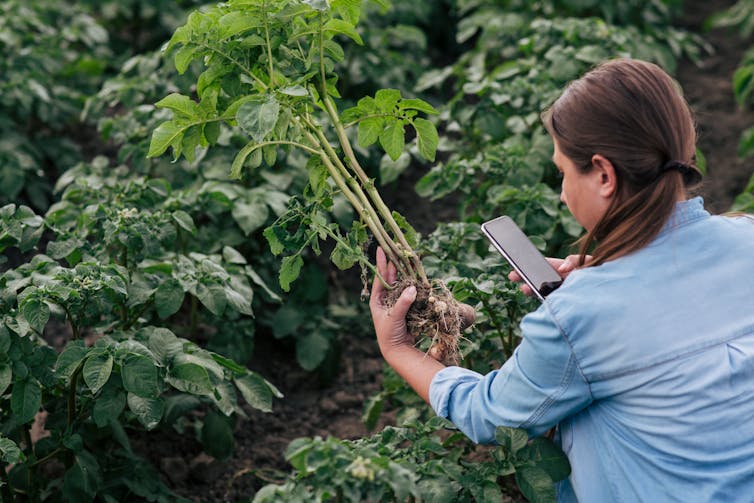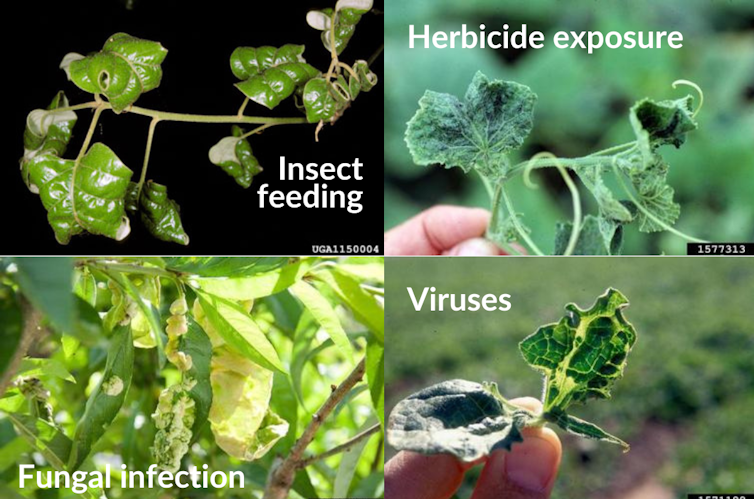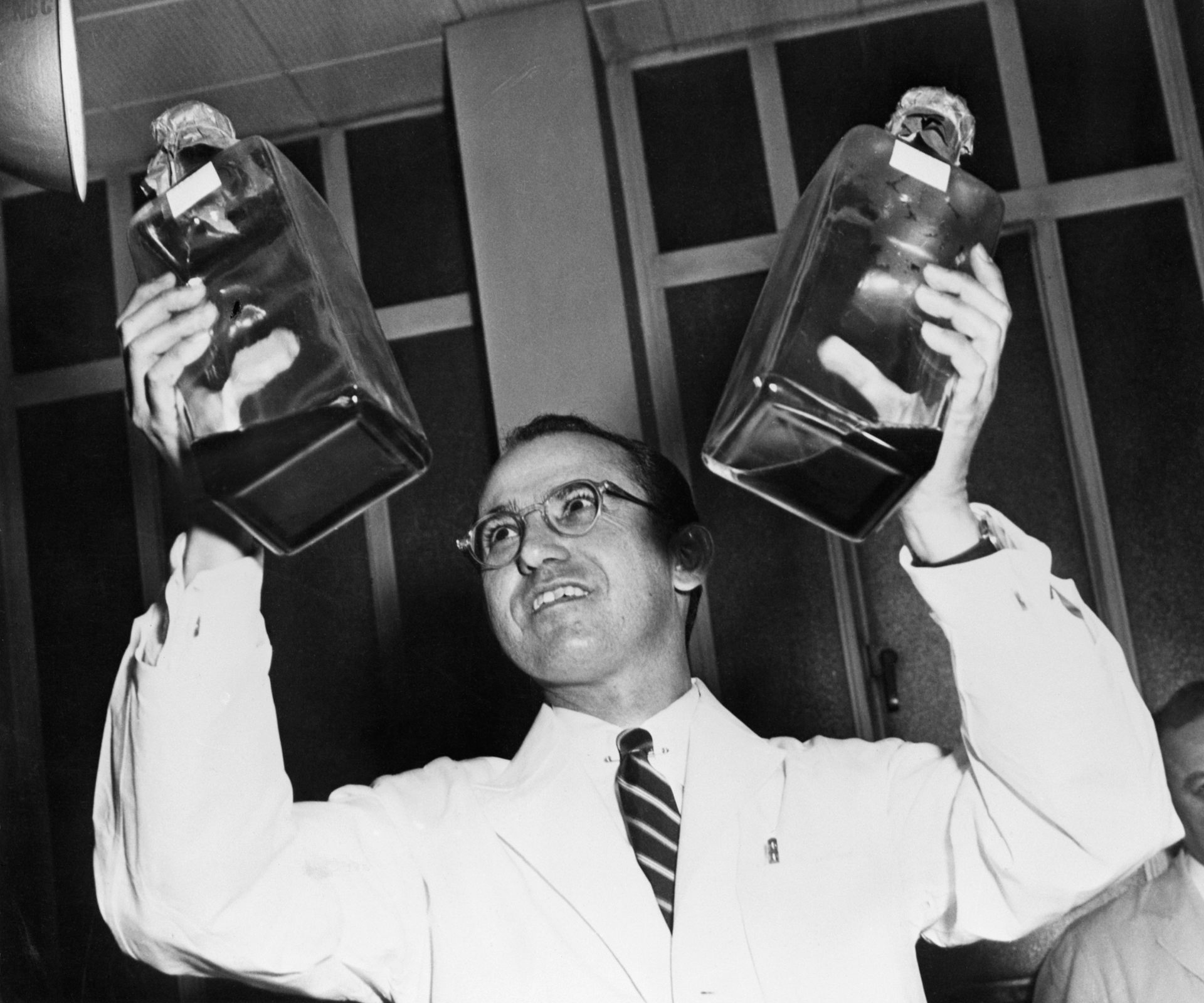From watering via ice cubes to spritzing with hydrogen peroxide – 4 misguided plant health trends on
Plant care advice abounds on TikTok, Twitter, Instagram and YouTube – but not all of it is good. A plant expert debunks four common recommendations.

The internet is full of advice on just about everything, including plant care.
As the director of a plant diagnostic laboratory and expert on plant medicine, I help people manage their plants’ health. Here are four trends I’ve seen online recently that have stood out as being especially misleading or potentially damaging to plants.
Watering orchids and other plants with ice cubes
Multiple sites claim ice cubes can be used to give orchids a “just right” amount of water. The fact is tropical plants hate cold temperatures. Leaving ice near an orchid’s roots may damage them.
Nearly all houseplants, including orchids, will prefer lukewarm or room temperature water, about 70 degrees Fahrenheit (21 degrees Celsius). Use fact sheets from educational institutions and reputable organizations to determine the correct amount of water and watering schedule for the types of plants you’re growing, and then set a reminder on your phone.
Use a potting medium that drains well and quickly. For orchids, a mix of bark chips and sphagnum moss is much better than 100% soil or coco coir.
‘No Mow May’
Many campaigns have sprung up recently promoting “No Mow May.” The idea is to delay regular mowing for the month of May to provide more feeding sites for pollinators, which are trying to shore up calories after their winter hibernation.
Unfortunately, this practice usually does not benefit pollinators and could damage your lawn’s health. Here’s why:
Mowing more than 30% of a grass leaf at once is never a good idea. Grasses depend on their blades to photosynthesize and meet their energy needs. When more than 30% is lost at once, the plants may not have enough remaining leaf surface area to photosynthesize properly.
Overgrown lawns have overgrown root systems, which require more energy. Failure to provide it leads to increased susceptibility to disease, poor water management and potential collapse. Such damage is pretty much unavoidable after a monthlong “no mow” period.
Few lawns actually contain enough flowers to be beneficial to pollinators, anyway. For many people, the “perfect lawn” is an unwavering green carpet. But that uniformity is useless to bees and other pollinators that require pollen and nectar that other plants can provide.
It’s great to prioritize pollinator health, but the “no mow” trend is best implemented in prairie, field and wetland environments, where there is a lot of plant diversity and flowering plants.
If you’re looking to support pollinator health in your own yard, plant native wildflowers that pollinators will actually want to visit. Most require less water and management compared to grass lawns. Replace your entire lawn or even a small strip. Any amount of lawn replaced is beneficial – and will save you water and money.
Make sure not to mow the wildflowers until they’ve finished flowering. A wildflower patch usually only needs to be cut once or twice a year. Mowing after the last frost in early spring will spread the previous year’s seeds and provide a home for insects to spend the winter.
Using hydrogen peroxide to ‘cure’ plant diseases
Hydrogen peroxide does sterilize surfaces and can reduce bacteria and some fungi. But the rapid reaction that gives hydrogen peroxide its sterilizing properties occurs almost immediately after coming in contact with other compounds. This does not permit hydrogen peroxide to move throughout a plant.
So most pathogens – the organisms that cause disease – will not be affected if they are in a plant’s tissues rather than on its exterior. Applying hydrogen peroxide excessively or improperly may even make plant health issues worse by drying surfaces and killing beneficial microbes.
While there is certainly a time and place for sterilizing surfaces in plant care – like with your pruners and propagation tools – the best defense against plant diseases is proper care.
Water your plants only when necessary and provide proper light and nutrition. Research what your plant likes best from educational institutions or other reputable sources. Routine pruning to increase airflow, proper plant spacing, avoiding single-crop planting and crop rotation are just some examples of chemical-free techniques to reduce plant stress and decrease disease susceptibility.

Diagnosing diseases using phone apps
Many apps exist that use photographs submitted by the user to identify plant diseases and offer solutions.
The truth is, to diagnose most plant diseases, a scientist needs to culture plant tissue to correctly identify pathogens. Only after an accurate diagnosis can they recommend management solutions. I have a pretty strong opinion here, since disease identification is what I do every day. Plant symptoms that accompany one disease may be practically identical to those of another.

For example, herbicide exposure, viruses, insect feeding and fungal infections can all cause twisted and deformed leaves. To properly diagnose an issue, the plant’s own history, location, site history, time of year and other factors need to be considered before I can take a guess as to what may be contributing to symptoms.
Don’t rely on an app to guess at what disease your plant may have – and don’t act on bogus recommendations. Instead, reach out to your local university diagnostic lab or extension office for support.
Not sure where to go? Start with the National Plant Diagnostic Network’s lab directory. Many, including mine, offer free consultations and recommendations. If you end up submitting a sample to a diagnostic lab, most are affordable – my lab’s fee is US$20 – and will be worthwhile, especially when you consider the cost of replacing the plant with something that could eventually have the same issue.
Nick Goltz (UConn Plant Diagnostic Laboratory) receives funding from the USDA-NIFA and the state of Connecticut.
Read These Next
The world risks forgetting one of humanity’s greatest triumphs as polio nears global eradication − 7
Polio may finally be defeated in the next 5 years. Will the world recognize what an extraordinary achievement…
Local democracy is holding strong, but rural communities are falling behind, new survey of Michigan
Officials from 70% of Michigan’s 1,856 cities, villages, counties and townships completed the survey.
How C-reactive protein outpaced ‘bad’ cholesterol as leading heart disease risk marker
C-reactive protein – a marker of inflammation – is as easily measured with blood work in a doctor’s…






